In the ever-evolving world of outdoor apparel, the raincoat stands out as a pivotal piece of gear, blending functionality with fashion. As we move into 2024, advancements in technology and shifts in consumer preferences are redefining what individuals seek in rain protection. This guide aims to shed light on the latest trends and technologies shaping the raincoat market. From innovative waterproof materials to designs that cater to a range of activities, understanding these developments is key for those looking to stay ahead. Ensuring comfort, durability, and style, the right raincoat not only keeps the wearer dry but also supports an active lifestyle, regardless of the weather. With a focus on the essential elements that make a raincoat effective and desirable, this article serves as a comprehensive resource for making informed decisions in raincoat selection.
Table of Contents
1. Understanding raincoat technologies
2. Market trends and consumer preferences
3. Key considerations for selection
4. Leading raincoat models of 2024
1. Understanding raincoat technologies
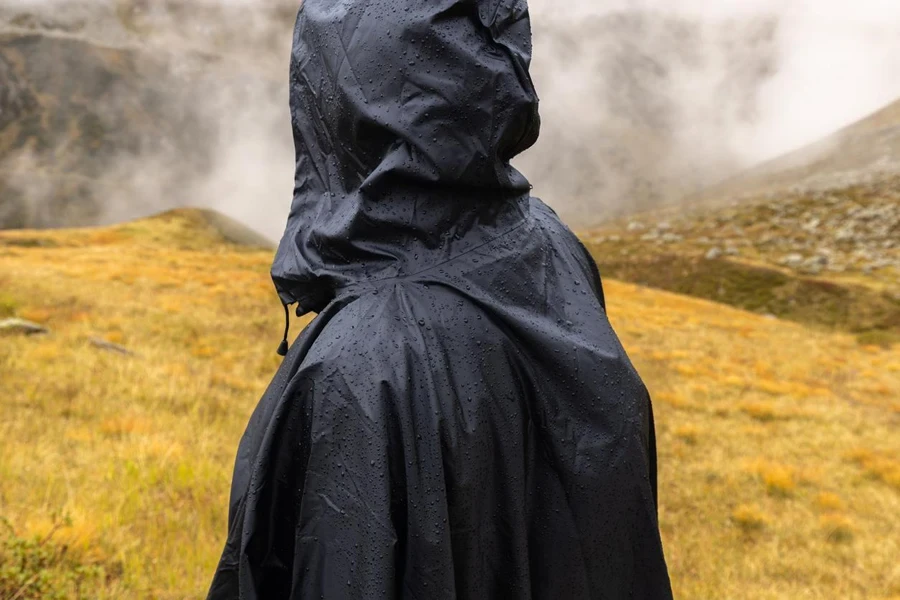
Within the realm of raincoat technologies, the evolution of materials and design has been pivotal in enhancing the user experience. As we delve into the complexities of these advancements, it becomes clear that the journey from traditional rainwear to today’s high-performance gear is marked by significant innovations and thoughtful engineering.
Material innovations
The distinction between waterproof and water-resistant fabrics is fundamental to understanding raincoat technologies. Waterproof materials offer an impenetrable barrier against water, ensuring that no moisture can penetrate the fabric, regardless of the conditions. This is achieved through the use of membranes or coatings that block water molecules while allowing vapor to escape, thereby maintaining breathability. Breathability, the fabric’s ability to let sweat vapor escape, is crucial for comfort, especially during physical activity. It prevents the buildup of moisture inside the raincoat, which can lead to discomfort and a feeling of dampness. Recent developments have seen the introduction of materials that balance high waterproof ratings with exceptional breathability, offering wearers protection from the rain while minimizing overheating and perspiration buildup.
Design and functionality
The design of a raincoat extends beyond its material composition to include features that enhance its functionality and user experience. Sealed seams are a critical aspect, as they prevent water from leaking through stitch holes, a common vulnerability in rainwear. By applying waterproof tape or other sealing methods, manufacturers ensure that their raincoats offer complete protection against the elements.
Adjustable hoods represent another key design feature, catering to diverse needs and preferences. A well-designed hood can be tightened to fit snugly around the face and head, providing essential visibility and protection in stormy weather. Some hoods are equipped with visors or brims, further shielding the wearer’s face from rain and wind.
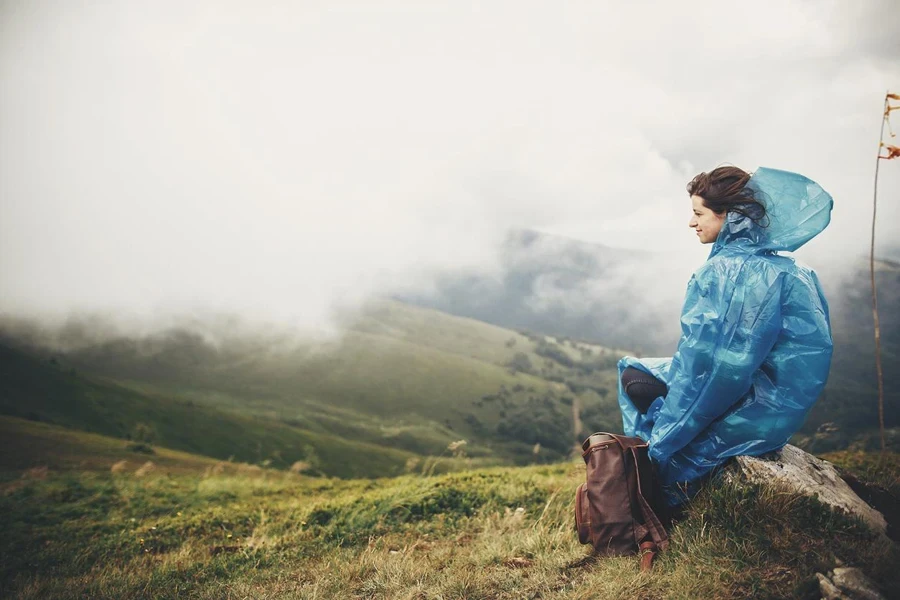
Additional features, such as venting options and adjustable cuffs, play a significant role in enhancing the raincoat’s overall performance. Ventilation zips, often found under the arms, allow for temperature regulation and airflow, which are particularly beneficial during strenuous activities. Adjustable cuffs, on the other hand, help to seal out water and wind, offering a customized fit that contributes to the wearer’s comfort and protection.
These advancements in raincoat technologies reflect a deep understanding of the wearer’s needs, from the fundamental requirement for dryness to the demand for comfort and versatility. As materials become more advanced and designs more refined, the modern raincoat emerges as a sophisticated piece of outdoor apparel that effectively bridges the gap between functionality and style.
2. Market trends and consumer preferences
Experts currently value the global raincoat market at approximately US$ 1.4 billion in 2023. They project it will reach around US$ 2.2 billion by 2030, growing at an estimated 5.9% compound annual growth rate (CAGR) from 2023 to 2031. This growth is primarily driven by the increasing adoption of rainwear as a fashion trend alongside the rising demand for rainwear in outdoor activities. Key players influencing this market include VF Corporation, Patagonia, Black Diamond Equipment, Ducktail Raincoats, Splashy Rainwear, WaterShed LLC, New Aashi Rainwear, and Heytex, among others. The market analysis highlights the Asia Pacific region as a significant contributor, expected to generate around 40% of the revenue share in 2023, with North America also identified as a key market for potential growth. Rain jackets are anticipated to dominate over 50% of the market revenue in 2023, with rain suits and ponchos also expected to see substantial sales increases, registering around an 8% CAGR.
The landscape of raincoat manufacturing and consumer choice is continually evolving, driven by advancements in materials and a keen awareness of style and functionality. This section delves into the latest trends in raincoat materials and design preferences that are shaping the market today.
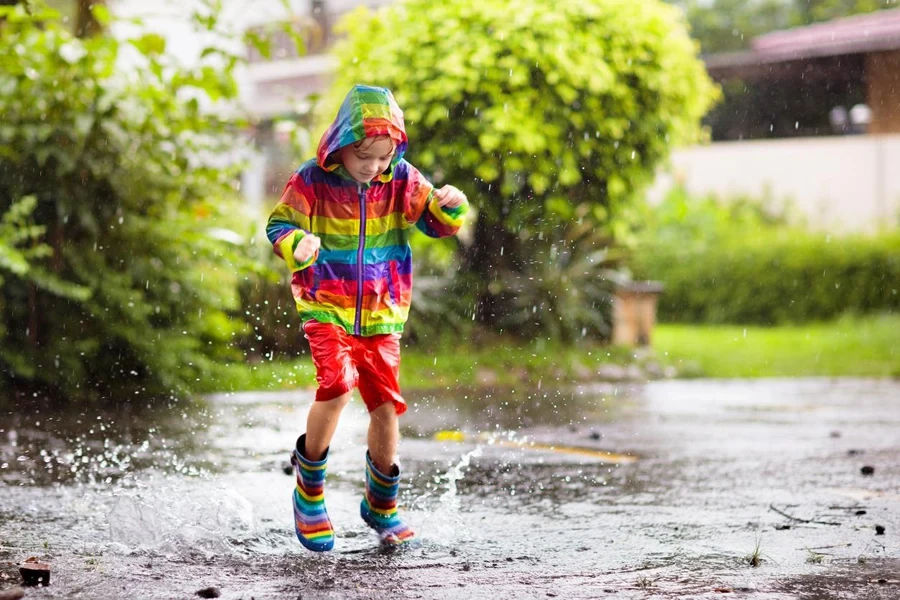
Recent advances in raincoat materials
In recent years, the push towards sustainability and enhanced performance has led to significant innovations in raincoat materials. Eco-friendly options have surged in popularity, with manufacturers adopting recycled fabrics and non-toxic, water-repellent finishes to minimize environmental impact. These sustainable materials not only offer effective water resistance but also promote breathability and durability, appealing to environmentally conscious consumers.
Simultaneously, the integration of technology in fabric production has seen the emergence of tech-enhanced fabrics. These materials are engineered to provide superior waterproofing and breathability, incorporating features such as adaptive temperature regulation and enhanced moisture wicking. The use of nanotechnology in coatings, for example, has enabled the creation of raincoats that repel water more effectively while allowing air to circulate, ensuring comfort in various weather conditions.
Popular styles and features
As consumer preferences evolve, so do the styles and features of raincoats. Minimalist aesthetics have become increasingly sought after, reflecting a broader trend towards simplicity and versatility in fashion. Raincoats with clean lines, subtle colors, and hidden seams are favored for their ability to seamlessly transition from outdoor adventures to urban environments. This minimalist approach does not compromise on functionality, with designs incorporating smartly placed pockets, adjustable hoods, and discreet ventilation systems.
Multifunctional aspects of raincoats are another area of focus. Consumers demand raincoats that offer more than just rain protection. Features such as detachable liners, convertible designs that can be worn as vests, and integration with other pieces of outerwear are popular. These multifunctional raincoats cater to a lifestyle that values flexibility and preparedness for any weather condition.
The convergence of eco-friendly materials, tech-enhanced fabrics, minimalist designs, and multifunctional features represents the current direction in raincoat development. These trends not only reflect the industry’s commitment to innovation and sustainability but also align with consumers’ growing desire for raincoats that are practical, stylish, and aligned with their values. As the market continues to evolve, these trends are expected to shape the future of raincoat selection, offering consumers a wider range of options that meet their needs for protection, comfort, and style.
3. Key considerations for selection
Selecting the right raincoat transcends mere aesthetics, delving into the technicalities that ensure optimal performance in varied conditions. Understanding the nuances of waterproof and breathability ratings, alongside considering the fit and comfort tailored to specific activities, are pivotal in making an informed decision.
Assessing waterproof and breathability ratings
The waterproof rating of a raincoat is often measured in millimeters, gauging the water pressure it can withstand before leakage occurs. A rating of 5000 mm is suitable for light rain, while 20,000 mm and above is designed for heavy downpours. However, the breathability rating, typically measured in grams, reflects the amount of moisture vapor that can escape the garment within a 24-hour period. Higher numbers indicate better breathability, crucial for active use where perspiration is a concern. These ratings, while technical, provide a tangible measure of a raincoat’s capability to protect and comfort the wearer in diverse weather conditions. Interpreting these figures allows for a tailored choice, ensuring the raincoat serves its purpose effectively, whether in a drizzle or a deluge.
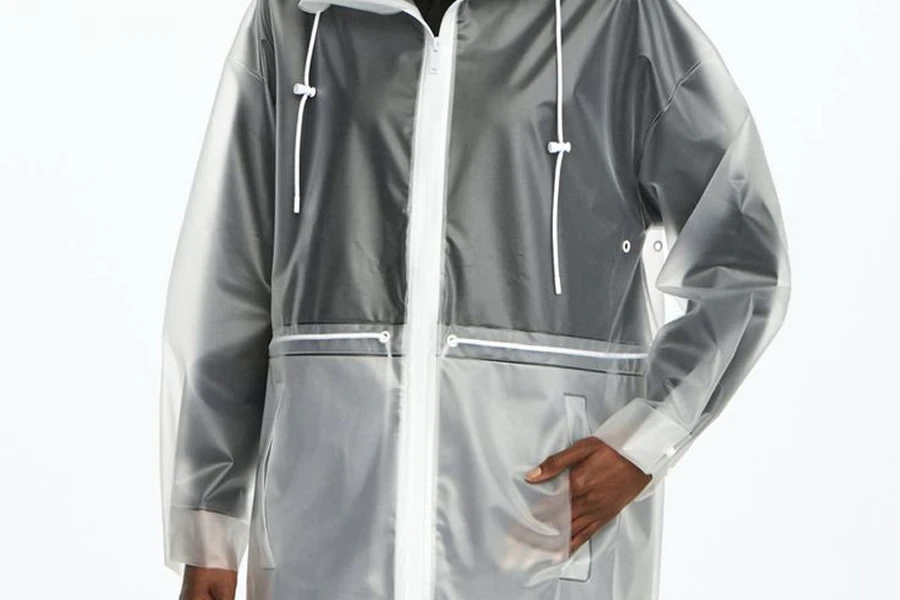
Fit and comfort for various activities
The fit of a raincoat significantly influences its functionality. A snug fit may favor urban commuters who navigate crowded streets and public transport, where sleek designs minimize bulk. Conversely, outdoor adventurers might opt for a looser fit, accommodating layers underneath to adapt to changing temperatures and conditions. Comfort extends beyond size, encompassing the placement of vents for airflow, the adjustability of cuffs and hoods to seal out the elements, and the distribution of pockets for practical accessibility. The activity for which the raincoat is intended dictates these design considerations. For instance, a hiker would benefit from underarm zips for ventilation on strenuous trails, whereas a city dweller might prioritize easy-to-access pockets for daily essentials.

In essence, the selection of a raincoat is a careful balance between technical specifications and personal needs. By assessing waterproof and breathability ratings, individuals can gauge a raincoat’s protective qualities. Meanwhile, considering the fit and comfort in relation to intended activities ensures the raincoat complements the wearer’s lifestyle. This holistic approach to selection empowers individuals to choose raincoats that not only promise to keep them dry but also support their adventures, be they in the heart of the city or the depths of the wilderness.
4. Leading raincoat models of 2024
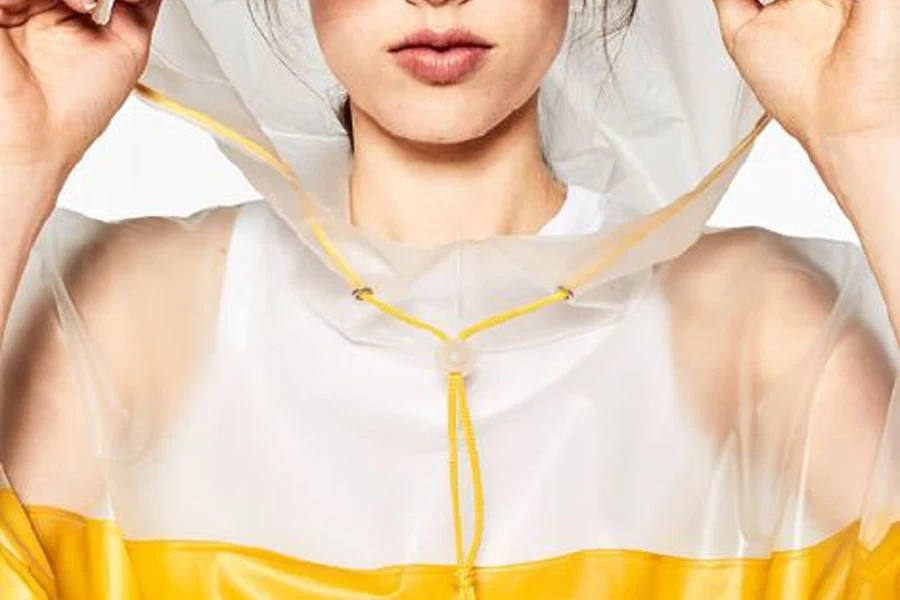
In the realm of raincoats, 2024 has ushered in an era of exceptional models that cater to a wide array of preferences and requirements. From sleek designs suitable for everyday use to robust options crafted for the outdoor enthusiast, the current market offers a plethora of choices designed to meet and exceed expectations.
Top picks for everyday use
For those seeking raincoats that meld style with functionality and durability for daily wear, the industry has responded with innovative designs that do not compromise on aesthetics. These models feature cutting-edge materials that ensure water resistance while offering breathable comfort, making them ideal for the urban commute or casual outings. Attention to detail in the construction, such as sealed seams and ergonomic fits, enhances their appeal, ensuring they serve as a stylish defense against the elements. The integration of minimalist designs with practical features, such as adjustable hoods and ample pocket space, underscores their versatility, making them a staple in the modern wardrobe.
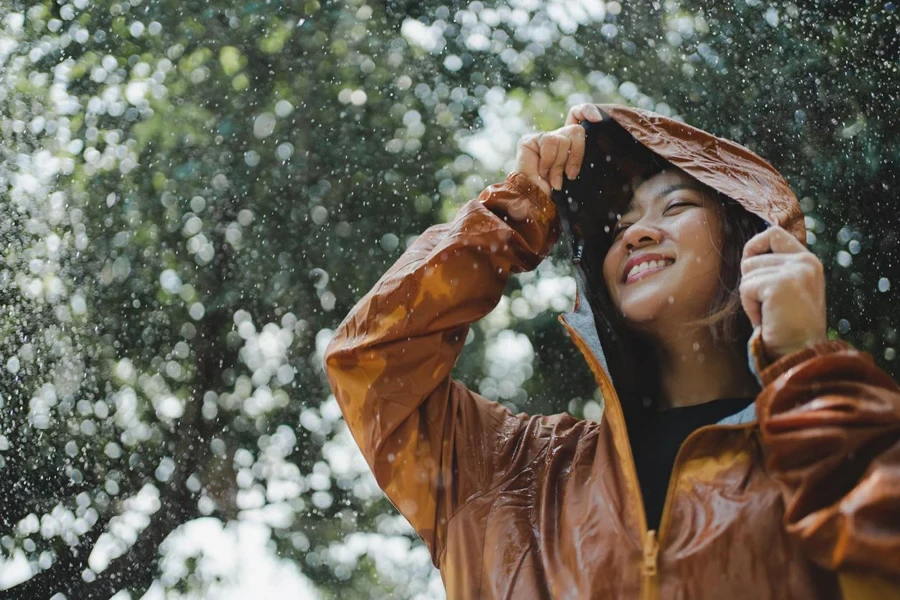
Best options for outdoor enthusiasts
Outdoor adventurers demand more from their gear, and the leading raincoat models of 2024 are built to withstand challenging weather conditions. These raincoats are characterized by their superior waterproof and breathability ratings, ensuring that wearers remain dry and comfortable, whether navigating a mountain trail or facing a storm at sea. Advanced technologies in fabric development have led to the creation of garments that not only offer unmatched protection but are also lightweight and packable, crucial for those who venture into the wilderness. Features such as underarm vents for enhanced airflow, reinforced areas prone to wear and tear, and compatibility with other layers for varying climates make these raincoats indispensable for the outdoor enthusiast.
The selection of raincoats available in 2024 reflects a confluence of innovation, style, and practicality. Whether for everyday use or specialized outdoor activities, these leading models demonstrate the industry’s commitment to providing high-quality options that cater to diverse lifestyles and preferences. With advancements in material science and design, choosing the right raincoat has become a simpler yet more rewarding process, ensuring that individuals are well-equipped to face the elements with confidence.
Conclusion
Selecting the ideal raincoat for 2024 involves a harmonious blend of technology, style, and functionality. As outlined, advancements in materials and design innovations offer waterproof and breathable solutions tailored for diverse lifestyles, from urban commutes to outdoor adventures. The market’s evolution showcases raincoats that not only meet functional demands for protection against the elements but also align with contemporary fashion trends, ensuring versatility and durability. Understanding these key considerations enables a choice that supports both practical needs and aesthetic preferences, marking a smart investment in comfort and style for the rainy days ahead.




